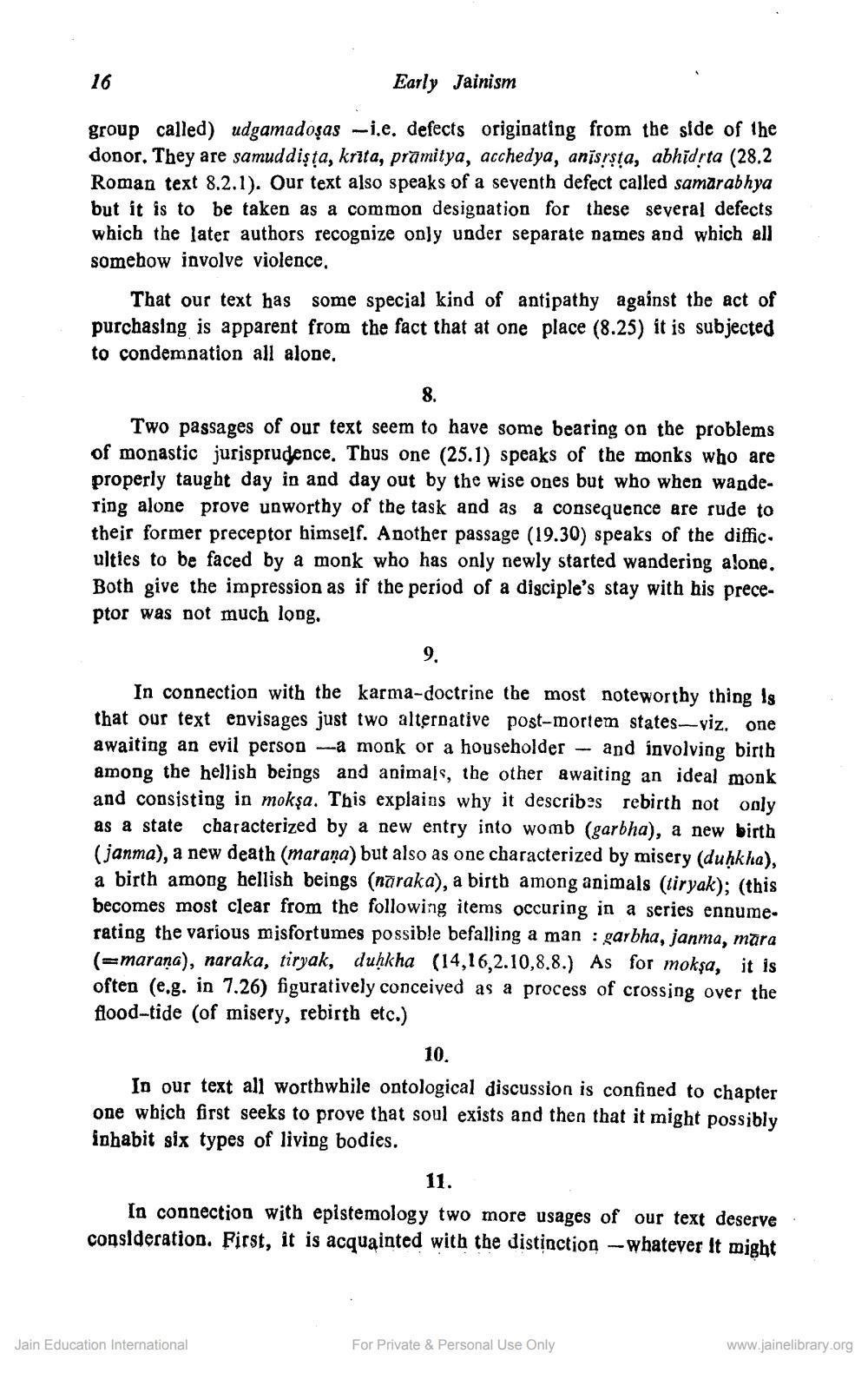________________
16
Early Jainism
group called) udgamadoşas - i.e. defects originating from the side of the donor. They are samuddista, krita, prāmitya, acchedya, anīsrsta, abhidrta (28.2 Roman text 8.2.1). Our text also speaks of a seventh defect called samarabhya but it is to be taken as a common designation for these several defects which the later authors recognize only under separate names and which all somehow involve violence,
That our text has some special kind of antipathy against the act of purchasing is apparent from the fact that at one place (8.25) it is subjected to condemnation all alone.
Two passages of our text seem to have some bearing on the problems of monastic jurisprudence. Thus one (25.1) speaks of the monks who are properly taught day in and day out by the wise ones but who when wandering alone prove unworthy of the task and as a consequence are rude to their former preceptor himself. Another passage (19.30) speaks of the diffic. ulties to be faced by a monk who has only newly started wandering alone. Both give the impression as if the period of a disciple's stay with his preçeptor was not much long,
In connection with the karma-doctrine the most noteworthy thing is that our text envisages just two alternative post-mortem states--yiz. one awaiting an evil person a monk or a householder - and involving birth among the hellish beings and animals, the other awaiting an ideal monk and consisting in mokşa. This explains why it describes rebirth not only as a state characterized by a new entry into womb (garbha), a new birth (janma), a new death (marana) but also as one characterized by misery (duhkha), a birth among hellish beings (näraka), a birth among animals (tiryak); (this becomes most clear from the following items occuring in a series ennume. rating the various misfortumes possible befalling a man : garbha, janma, mara (=marana), naraka, tiryak, duhkha (14,16,2.10,8.8.) As for mokşa, it is often (e.g. in 7.26) figuratively conceived as a process of crossing over the flood-tide (of misery, rebirth etc.)
10. In our text all worthwhile ontological discussion is confined to chapter one which first seeks to prove that soul exists and then that it might possibly inhabit six types of living bodies.
11.
In connection with epistemology two more usages of our text deserve. consideration. First, it is acquainted with the distinction --whatever It might
Jain Education International
For Private & Personal Use Only
www.jainelibrary.org




